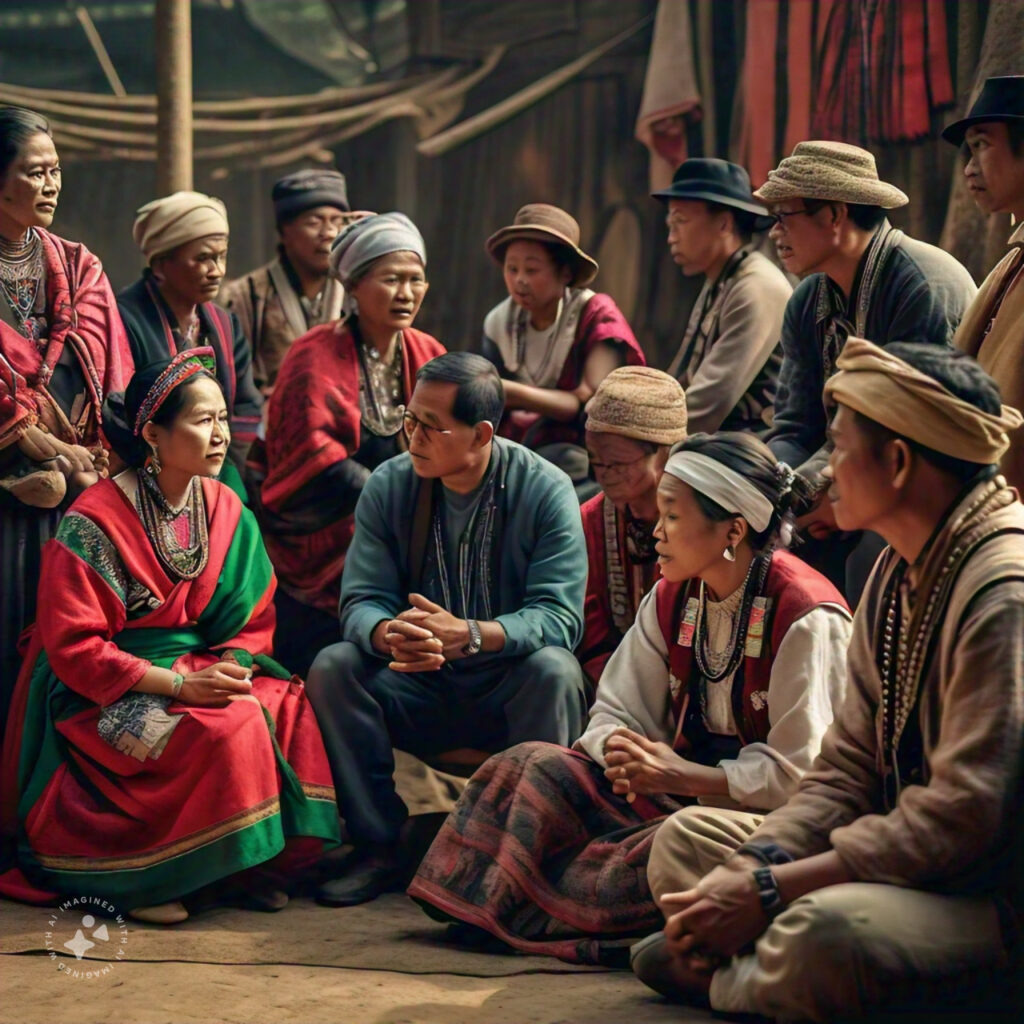Have you ever wondered how researchers get to know a culture inside and out? Well, that’s where ethnographic research comes in! It’s like being a cultural detective, immersing yourself in a community to uncover its hidden treasures and unspoken rules. In this article, we’ll explore some fascinating ethnographic research examples that’ll make you see the world in a whole new light.
What is Ethnographic Research?
Before we dive into the examples, let’s quickly break down what ethnographic research is all about. Essentially, it’s a qualitative research method where researchers become part of the community they’re studying. They observe, participate, and interview people to gain a deep understanding of their culture, behaviors, and beliefs.
Key features of ethnographic research include:
- Long-term immersion in the field
- Participant observation
- In-depth interviews
- Detailed field notes
- Reflexivity (researchers reflecting on their own biases)
Now, let’s explore some real-world examples that showcase the power of this research method!
10 Fascinating Ethnographic Research Examples | Real-World Cultural Studies

1. The Nacirema: A Classic Example
We can’t talk about ethnographic research without mentioning Horace Miner’s famous study of the Nacirema. Published in 1956, this tongue-in-cheek ethnography described the bizarre customs of a group of people obsessed with cleanliness and body rituals.
The twist? Nacirema is “American” spelled backward, and Miner was actually describing American culture from an outsider’s perspective. This clever study:
- Highlighted the importance of cultural relativism
- Showed how our customs can seem strange when viewed from a different angle
- Demonstrated the power of ethnographic description
2. Street Corner Society: Urban Ethnography
William Foote Whyte’s “Street Corner Society” is a landmark study in urban ethnography. Published in 1943, Whyte spent four years living in a Boston Italian slum, observing the social structure of street gangs and local politics.
Key insights from this study:
- Revealed complex social hierarchies within seemingly disorganized communities
- Demonstrated the importance of social networks in urban life
- Pioneered participant observation techniques in urban settings
3. Coming of Age in Samoa: Cultural Comparisons
Margaret Mead’s groundbreaking study “Coming of Age in Samoa” (1928) explored adolescence in Samoan society. By living among Samoan girls and women, Mead sought to understand how different cultures shape the experience of growing up.
This study:
- Challenged Western assumptions about adolescence
- Highlighted the role of culture in shaping human development
- Sparked debates about nature vs. nurture in human behavior
4. The High School: Education Ethnography
In “The High School,” Philip Jackson (1968) conducted an in-depth ethnographic study of life in American high schools. By observing classrooms, talking to students and teachers, and participating in school activities, Jackson uncovered the “hidden curriculum” of schooling.
Key findings included:
- The importance of unwritten rules and social norms in school success
- The role of power dynamics between teachers and students
- The impact of school culture on student learning and socialization
5. Body Ritual Among the Nacirema: Revisited
Inspired by Miner’s original work, contemporary researchers have continued to use the Nacirema approach to examine modern American culture. For example, a 2018 study by anthropologist Brenda Osbey looked at the “sacred money temples” (banks) of the Nacirema.
This updated ethnography:
- Explored the rituals and beliefs surrounding money in American society
- Highlighted the cultural significance of financial institutions
- Demonstrated the ongoing relevance of the Nacirema approach in cultural critique
6. The Cocktail Waitress: Workplace Ethnography
James Spradley and Brenda Mann’s “The Cocktail Waitress” (1975) is a fascinating example of workplace ethnography. By working as cocktail waitresses themselves, the researchers gained insider knowledge of the social world of bars and nightclubs.
This study revealed:
- The complex social interactions between waitresses, bartenders, and customers
- The strategies waitresses use to manage difficult situations and maximize tips
- The gendered nature of service work in bars
7. Righteous Dopefiend: Urban Poverty and Addiction
In “Righteous Dopefiend” (2009), Philippe Bourgois and Jeff Schonberg spent over a decade studying homeless heroin addicts in San Francisco. This powerful ethnography combined participant observation with photography to create a vivid portrait of life on the streets.
Key insights included:
- The impact of structural violence on marginalized communities
- The complex social networks and survival strategies of homeless addicts
- The ethical challenges of conducting research with vulnerable populations
8. Corporate Tribes: Business Anthropology
Anthropologist Karen Ho’s “Liquidated: An Ethnography of Wall Street” (2009) brought ethnographic methods to the world of high finance. By working as an investment banking analyst, Ho gained unique insights into the culture of Wall Street.
This study:
- Revealed the cultural values and beliefs that drive Wall Street behavior
- Explored the impact of finance culture on broader society
- Demonstrated the value of ethnographic methods in understanding corporate cultures
9. Digital Ethnography: Studying Online Communities
As more of our lives move online, ethnographers have adapted their methods to study digital communities. For example, Tom Boellstorff’s “Coming of Age in Second Life” (2008) is an ethnographic study of the virtual world of Second Life.
This innovative research:
- Explored how people construct identities and communities in virtual spaces
- Examined the blurring of boundaries between online and offline worlds
- Pioneered methods for conducting ethnographic research in digital environments
10. Ethnography in Design: IDEO’s Deep Dive
The design firm IDEO has famously used ethnographic methods to inform product design. In their “Deep Dive” approach, researchers immerse themselves in the lives of potential users to uncover unmet needs and design opportunities.
For instance, when redesigning a shopping cart, IDEO researchers:
- Observed shoppers in supermarkets
- Interviewed store employees
- Experimented with different cart designs in real-world settings
This approach has:
- Revolutionized product design processes
- Demonstrated the value of ethnographic insights in business contexts
- Shown how ethnographic methods can be adapted for applied research
The Impact and Future of Ethnographic Research
These examples showcase the incredible diversity and power of ethnographic research. From uncovering hidden social structures to informing product design, ethnography offers unique insights into human behavior and culture.
As we look to the future, ethnographic methods continue to evolve. Researchers are now:
- Using technology like wearable cameras and sensors to capture data
- Combining ethnographic insights with big data analytics
- Exploring new ethical frameworks for conducting research in an increasingly connected world
Whether you’re a budding researcher, a curious student, or just someone fascinated by human behavior, ethnographic research offers a window into the rich complexity of human cultures. So next time you’re people-watching at a café or scrolling through social media, remember: you might just be doing a bit of amateur ethnography yourself!
External Sources:
- American Anthropological Association. (2022). What is Anthropology? https://www.americananthro.org/
- Hammersley, M., & Atkinson, P. (2019). Ethnography: Principles in Practice. Routledge. https://www.routledge.com/
- Pink, S., Horst, H., Postill, J., Hjorth, L., Lewis, T., & Tacchi, J. (2016). Digital Ethnography: Principles and Practice. SAGE Publications. https://uk.sagepub.com
- LeCompte, M. D., & Schensul, J. J. (2010). Designing and Conducting Ethnographic Research: An Introduction. AltaMira Press. https://rowman.com/
- Agar, M. (1996). The Professional Stranger: An Informal Introduction to Ethnography. Academic Press. https://www.elsevier.com/
Also Read: Quantitative Vs Qualitative Research

